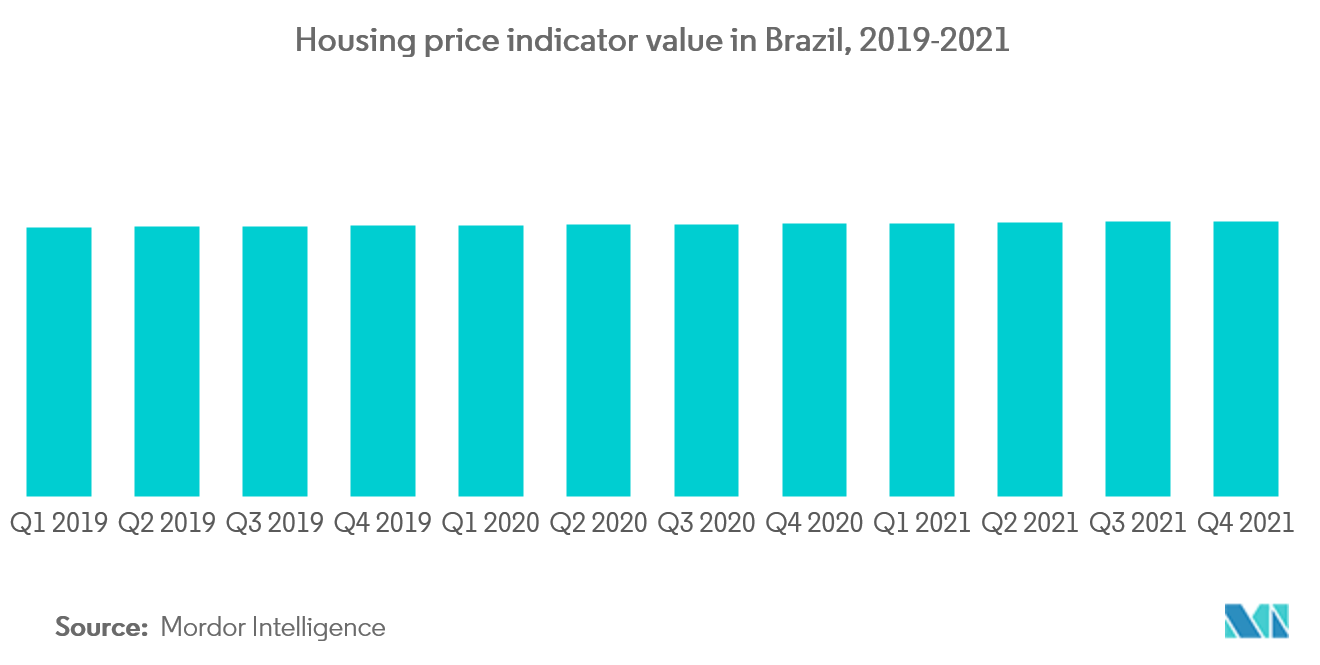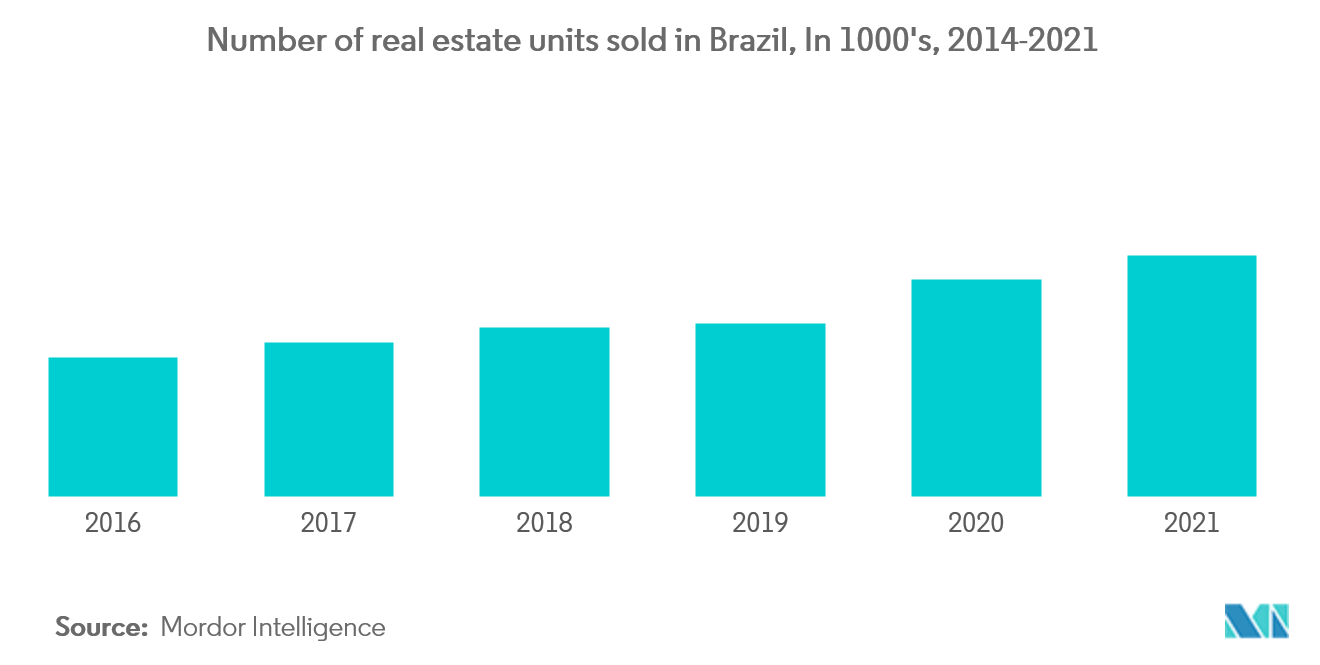Market Trends of Brazil Home Equity Lending Industry
This section covers the major market trends shaping the Brazil Home Equity Lending Market according to our research experts:
Brazil's Real Estate Boom During the Pandemic
The COVID-19 epidemic is altering the Brazilian real estate market. People who were formerly drawn to major cities are now exploring for chances outside of the congested urban centres. In September 2020, 13,438 homes were sold in Brazil, the highest monthly sales performance since 2014. Rising demand resulted into rising prices, and the Fipe-Zap index increased by 3.2% year on year to 133.29 points in October 2020, the largest gain since 2008.
Property rental and buying preferences have shifted significantly as individuals strive to reconcile work and family life in the new remote working environment. Larger rooms and enough space for a home office have become essential characteristics of the most desirable residences. Quinto Andar, a Brazilian real estate startup, noticed a 67% spike in demand for four-bedroom residences between April and May 2020, while demand for flats with up to three bedrooms increased by 6%. Demand for properties, particularly those in gated communities, soared by 76%.
The greatest economic reason for this real estate anomaly is low loan rates. Brazil once had unusually high real interest rates, with the SELIC peaking at 25.5% in the first quarter of 2002. The central bank was able to maintain a continuous policy of interest rate reduction due to the successful management of the inflation targeting programme, the buildup of foreign reserves during the commodities boom, and other institutional improvements. From 2017 to 2020, the Selic rate was cut by 12.25% points each year, reaching 2% in October 2020, the lowest level ever.

New Building Financing is rising in Brazil
The growing importance of new residences in the Brazilian real estate industry This trend is most visible in mortgage financing. Previously, the majority of loans were for resale houses, but the trend has shifted to new properties. The Brazilian real estate market has historically suffered from a substantial supply shortage, with the gap amounting to millions of dwellings. And the most recent consumer demand numbers indicate that this situation is unlikely to alter in the foreseeable future. Brazilian real estate activity was brisk in the first three months of 2021. New-build property sales increased by 27.1% last year, totaling 53,185 units. Plots of land continued to sell quickly, with purchasers particularly interested in lots in complexes featuring common facilities such as pools and recreation spaces.
Mortgage lending also increased dramatically in Q1. On the strength of ongoing low interest rates, the number of loans increased by 112.8% across the country last year. Mortgage loan levels nearly quadrupled in some regions of Brazil, such as Ceará, in a year. The strength of the real estate market is so robust that it is presently a key driving factor in the Brazilian economy. The Brazilian Statistical Institute (IBGE) mentioned that GDP increased by 1.2% in the first quarter of 2021. The Institute attributes this gain to two areas of the economy: civil construction (up 2.1%) and real estate (up 1%).


